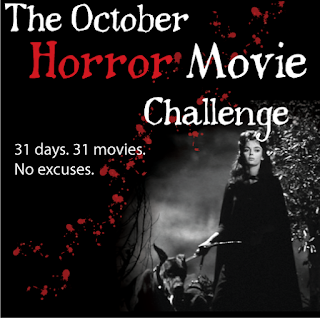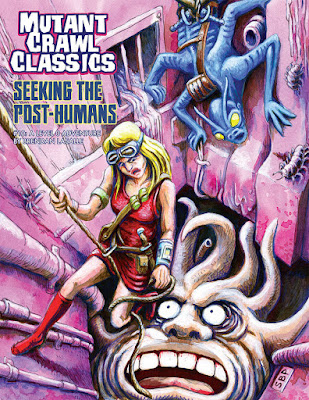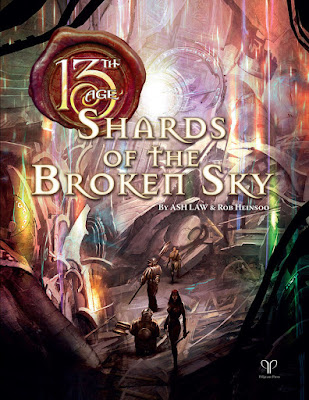October 10th marks the second anniversary of Greg Stafford’s passing. To both commemorate that date and celebrate Greg’s contribution to the roleplaying hobby, today’s review from Reviews from R’lyeh is of The Smoking Ruin & Other Stories, the first anthology of scenarios for RuneQuest: Roleplaying in Glorantha.
—oOo—
 The Smoking Ruin & Other Stories
The Smoking Ruin & Other Stories is an anthology of ready-to-play scenarios for
RuneQuest: Roleplaying in Glorantha, the roleplaying game set in Greg Stafford’s mystical world of gods, faith, magic, cults, and great heroes that is Glorantha. Published by
Chaosium, Inc., it presents three scenarios and source material that will take the Player Characters west of Sartar and into the South Wilds of the Dragonspine Mountains where they will discover ancient ruins and encounter ancient legends, rabid troll spirits, creatures out of the past, dinosaurs and Dragonnewts, Beastmen of every stripe and colour, priests and politicians, and more. It is designed for beginning Player Characters, but can easily be run using more experienced Player Characters, and that includes Player Characters who have played through ‘The Broken Tower’ from the
RuneQuest: Roleplaying in Glorantha – QuickStart Rules and Adventure and the
RuneQuest Gamemaster Screen Pack—and that includes the roleplaying game’s signature beginning Player Characters from
RuneQuest: Roleplaying in Glorantha – QuickStart Rules and
RuneQuest: Roleplaying in Glorantha core book. This is because the first adventure in the anthology—‘The Smoking Ruins’ begins and ends at Clearwine Fort, which if the players have played through the scenarios from the ‘RuneQuest Gamemaster Adventures’ book from the
RuneQuest Gamemaster Screen Pack, their characters should have visited and forged links with, and further, the events of
The Smoking Ruin & Other Stories take place after those of the scenarios in the ‘RuneQuest Gamemaster Adventures’ book.
To play through The Smoking Ruin & Other Stories, the Game Master will need access to RuneQuest – Glorantha Bestiary as it provides more details of the foes and NPCs that the Player Characters are very likely to meet as they adventure through the three scenarios in the anthology. Ideally, the Game Master will want the ‘RuneQuest Gamemaster Adventures’ book from the RuneQuest Gamemaster Screen Pack. It is not absolutely necessary to run The Smoking Ruin & Other Stories as the anthology includes background information and the major NPCs from Clearwine Fort described in the ‘RuneQuest Gamemaster Adventures’ book. However, the full information on both is given in the ‘RuneQuest Gamemaster Adventures’ book and will be useful. Access to a copy of King of Sartar will serve as an interesting corollary, but is definitely not required and only the most dedicated of Gloranthaphiles should be concerned about its inclusion.
In terms of the types of adventurers required for The Smoking Ruin & Other Stories, a Shaman will prove more than useful, but again, not essential to its play through. Orlanth and Ernalda worshippers will find much to do in the scenarios—especially in ‘The Smoking Ruins’, and if such Player Characters have played through the scenarios in the ‘RuneQuest Gamemaster Adventures’ book from the RuneQuest Gamemaster Screen Pack, then all the better. This is because one of their number is likely to have been appointed Thane of Apple Lane and will have begun forging political links with Queen Leika’s court at Clearwine Fort. Similarly, a priestess of Ernalda or worshipper is likely to have links to the Ernalda temple at Clearwine Fort and at least be aware of its politics. Lastly, one of the Player Characters should have some kind of performance skill, such as Dance, Orate, Play Instrument, or Sing. The likelihood is that one or more of the Player Characters will have some of these skills, so again, a specialist with a high rating in any of these performance skills is not necessary. However, ‘The Smoking Ruins’ will present an opportunity for any Player Character with a good performance skill to shine—and more!
In addition to presenting its three scenarios, The Smoking Ruin & Other Stories presents some background and history of the region where they take place as well as the locations particular to each of the three scenarios. This starts with a gazetteer and history of the South Wilds, but also covers Clearwine Fort, political and religious centre of the Colymar Tribe; the Lost Valley, home to an isolated farming and herding community loyal to the Feather Horse Queen, but also the site of ruined ancient tower out of time and myth; and the Grove of Green Rock, for which the Aldryami have great plans. Each of these locations is accompanied by full descriptions and stats for each of the monsters, creatures, and NPCs to be found there, plus for the Lost valley, there are notes should a player want his character to originate from there. Arguably, the most notable of these locations is The Wild Temple, an eight-kilometre-wide web of megalithic standing stones which dominates the valley it stands in, sacred to both Beast People and the Grazeland Pony Breeders, particularly the former as it is centre of their spirit religion. Here may be encountered a wide array of creatures and peoples, from Centaurs, Satyrs, and Minotaurs to ‘Things No Longer Found in this World’, spirits, and Fox Women. All of them are given full stats, individualising them as you would expect for a RuneQuest: Roleplaying in Glorantha supplement.
The main scenario in The Smoking Ruin & Other Stories is the eponymous ‘The Smoking Ruin’, which takes the Player Characters from the political tensions at Clearwine Fort to an ancient ruined settlement high in the Dragonspine Mountains filled with Troll corpses set alight long ago and still burning such that the smoke blights the sky and back again to political tensions at Clearwine Fort. Beginning in Sea Season, 1626, Player Characters are hired by a priestess at the Temple to Ernalda to lead an expedition into the South Wilds where an ancient, sacred artefact might be found. They will need to conduct some research first, but accompanied by a precocious NPC, they must make the trip there and back again in a matter of just weeks. Despite the limited time frame, they are treated to something of a travelogue across the South Wilds before getting to the Smoking Ruins themselves. There are plenty of opportunities here for the Player Characters to meet people, learning something of the region, and lay the foundations for some firm friendships.
The limited time frame means that the Player Characters are unlikely to do more than make a brief exploration of this ancient complex of buildings and temples, for there is a lot more going on here than is presented in the plot of the scenario, ‘The Smoking Ruin’. In fact, so much more, that the location deserves at least more scenarios which will bring the Player Characters back to it to explore and play through the threads the scenarios hints at, but leaves hanging. As to the plot of ‘The Smoking Ruin’, it is both weird and wondrous, both mysterious and magical, and both mythical and epic in its storytelling. The scenario is lengthy and rich in detail, focusing on roleplaying, exploration, and Glorantha as a magical place, rather than on combat, offering multiple sessions of play. Plus, the beginning and the end pull the Player Characters into the politics at Clearwine Fort, also offering opportunities for further roleplaying and if playing the ‘Apple Lane’ series of scenarios, tying them further to the region—or beginning to if The Smoking Ruin & Other Stories is the Player Characters’ first scenario.
Whilst ‘The Smoking Ruin’ is an epic in length, the other two scenarios in The Smoking Ruin & Other Stories are shorter. All three though, share a sense of the epic in their scope. The first of these is ‘Urvantan’s Tower’, which takes place in the Lost Valley described earlier and begins with the Player Characters at the mouth of the valley, having been sent there as observers at the behest of Queen Leika. (This might be a punishment, or it might be an indication of trust, depending upon how Queen Leika regards the Player Characters after the events of ‘The Smoking Ruin’). The captain of the Wardens, essentially the militia for the Lost Valley and its village of True Ford, has come to Clearwine Fort to petition the Queen for help following the Lost Valley’s occupation of the Company of the Manticore, a band of mercenaries in the service of the Lunar Empire.
Like many of the inhabitants of the Lost Valley, the Warden captain had hoped that another denizen of the Lost Valley, the Zzaburi Urvantan, a great sorcerer, might have come to their aid, but he has not left his tower retreat in some seasons. The likelihood is that the Player Characters will be outmatched by Company of the Manticore, so ultimately the sorcerer may be their only hope, as well as that of the Lost Valley’s inhabitants. Thus, they will need to find their way into Urvantan’s Tower—which will probably involve a certain amount of stealth upon the part of the Player Characters, and determine what has happened to him, before hopefully getting to come out and drive the Company of the Manticore out of the valley.
‘Urvantan’s Tower’ is playable in two or three sessions and certainly gives the Game Master an incredibly powerful NPC to roleplay. The danger to avoid in the climax is making the final showdown between the sorcerer and the Company of the Manticore all about the sorcerer, for although he plays a major role, the Player Characters should also. Good advice is given to that end. Now whilst ‘Urvantan’s Tower’ has the structure of a traditional fantasy roleplaying adventure—‘village in peril, mercenary/monstrous threat, mysteriously disappeared wizard who is the only hope’—the scenario gives a very different spin on the set-up. Again, it is tied very much into the background and history of Dragon Pass, which gives the scenario a richness and introduces the players and their characters to more aspects of Glorantha.
Where ‘Urvantan’s Tower’ involved a mixture of stealth, exploration, and combat, the third scenario in The Smoking Ruin & Other Stories is all about combat, well combat and secrecy, but primarily combat! ‘The Grove of Green Rock’ is not designed to be played in a few long sessions, but really played out over the course of a few years. The Player Characters are hired as mercenaries by an Aldryami, but as to their mission, they are sworn to secrecy! In fact, they are hired to help protect a ritual which will strengthen the Aldryami presence in Dragon Pass, but to complete the ritual, the Elves will have to repeat it several times over the next few years, which means that the Player Characters will be hired again and again, each time to protect it from enemies sworn to prevent the return of the Aldryami to the region. Each time the Player Characters will face increasingly more difficult foes, but will receive some aid from their employer and better and better reward! Essentially this is the RuneQuest: Roleplaying in Glorantha equivalent of a ‘base defence’ game and the likelihood is if the incidences or ‘waves’ of the ritual defence are played out one after the another, they will lose their impact. Plus, returning to protect the ritual year after year means that each time the Player Characters are more powerful and capable of facing the increasingly tougher foes.
Physically, The Smoking Ruin & Other Stories is a well presented, sturdy, hardback. The artwork is excellent throughout, some of it being repeated from other supplements, and the cartography very clear. However, it needs an edit in a few places and writing could have been clearer too in places, and sometimes the artwork feels as it could have served the scenarios better. It certainly would have been nice to be able to show some illustrations of specific locations in the Smoking Ruins as handouts for example. Another issue is the placement of the maps. Although there is a handy book in The Smoking Ruin & Other Stories, it would have been perhaps useful if the maps of the South Wilds and the Smoking Ruins had been printed inside the front and back covers respectively for easy access. Nevertheless, The Smoking Ruin & Other Stories is another good-looking book for RuneQuest: Roleplaying in Glorantha.
It feels like there has been an age to wait for new scenarios for RuneQuest: Roleplaying in Glorantha, but with the publication of The Smoking Ruin & Other Stories, the wait has definitely been worth it. The three scenarios it contains are all begging to be played and in particular, added to a campaign, because each one has ramifications for campaign play. After ‘The Smoking Ruin’, the Player Characters might improve their standing at Clearwine Fort and of Clearwine Fort itself—or not, they may help forge a friendship and an alliance with the inhabitants of the Lost Valley in ‘Urvantan’s Tower’, and in ‘The Grove of Green Rock’, the Player Characters may help return the Elves to Dragon Pass. They will also reveal more of the history of the Dragon Pass, perhaps even some of its secrets, bringing both to live through play. Yet The Smoking Ruin & Other Stories only details so much, whilst hinting at so much more. There can be no doubt that The Smoking Ruin & Other Stories deserves a sequel, especially one which focuses on the Smoking Ruin itself.
The Smoking Ruin & Other Stories contains interesting setting material and two decent scenarios. The comparative brevity of ‘Urvantan’s Tower’ and ‘The Grove of Green Rock’ and the emphasis on combat in the latter means that they are unlikely to be quite as memorable as the first scenario in the anthology, but do not take that as meaning that either scenario is bad. Far from it. However, in comparison, ‘The Smoking Ruin’ is a fantastical epic, rich in the flavour and detail that Glorantha is so famous for, an impressive epic that draws the Player Characters into it, and it is simply begging for a return visit.
Overall, The Smoking Ruin & Other Stories presents a fantastical trilogy of scenarios for RuneQuest: Roleplaying in Glorantha, opening up some of the wonders and wondrous nature of Glorantha. Hopefully, future scenarios will return to explore the South Wilds in further detail and to as high a quality.
 Inquisition (1976)
Inquisition (1976) The Demons (1973)
The Demons (1973)
 Mark of the Devil (1970)
Mark of the Devil (1970)





















